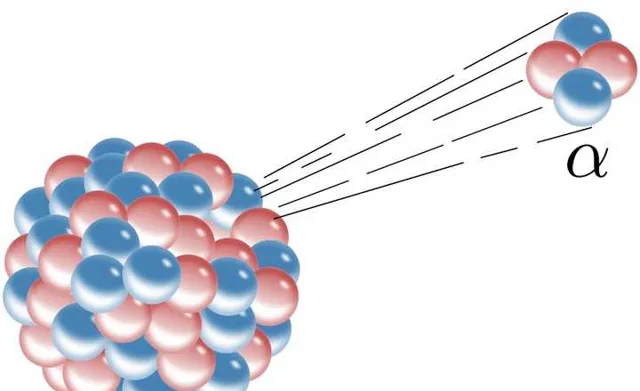Alpha衰變的本質是量子穿隧效應,受電磁力和核力的支配。
1928年,朗奴·威爾弗雷德·格尼(Gurney)、愛德華·康登(Condon)與伽莫夫獨立的提出了Alpha衰變的量子穿隧理論,他們的論文中如此提到:
「It has hitherto been necessary to postulate some special arbitrary ‘instability’ of the nucleus, but in the following note, it is pointed out that disintegration is a natural consequence of the laws of quantum mechanics without any special hypothesis...Much has been written of the explosive violence with which the α-particle is hurled from its place in the nucleus.But from the process pictured above, one would rather say that the α-particle almost slips away unnoticed.」
(迄今為止,有必要假設原子核的某些特殊的任意「不穩定性」,但在下面的註釋中可以明顯的看出,衰變是量子力學定律的自然結果,而沒有任何特殊的假設……關於Alpha粒子從原子核中被投擲的爆炸性暴力已經寫了很多。但從上圖的過程來看,我們更願意說的是,Alpha粒子幾乎是悄無聲息地溜走了。)
該理論假設,在原子核中,Alpha粒子可以被認為是一個獨立的粒子,一直在核力的勢壘中受約束運動。(也許你可以用化學裏的共振態來理解)

然而,按照量子力學,Alpha粒子在與核力的勢壘的每次碰撞中,都有極小的概率會「穿隧」出去。雖然這個概率接近於零,但如果次數非常多,宏觀上我們就會觀察到衰變。
例如,在一個直徑約為10^ -14 m的原子核內,一個速度為1.5×10^7 m/s的Alpha粒子每秒與勢壘的碰撞高達10^21次。如果每次穿隧的機率較大,半衰期就會很短;反之,半衰期就會很長,同位素鉍209的半衰期長為2.01×10^19年,比宇宙年齡還長。











